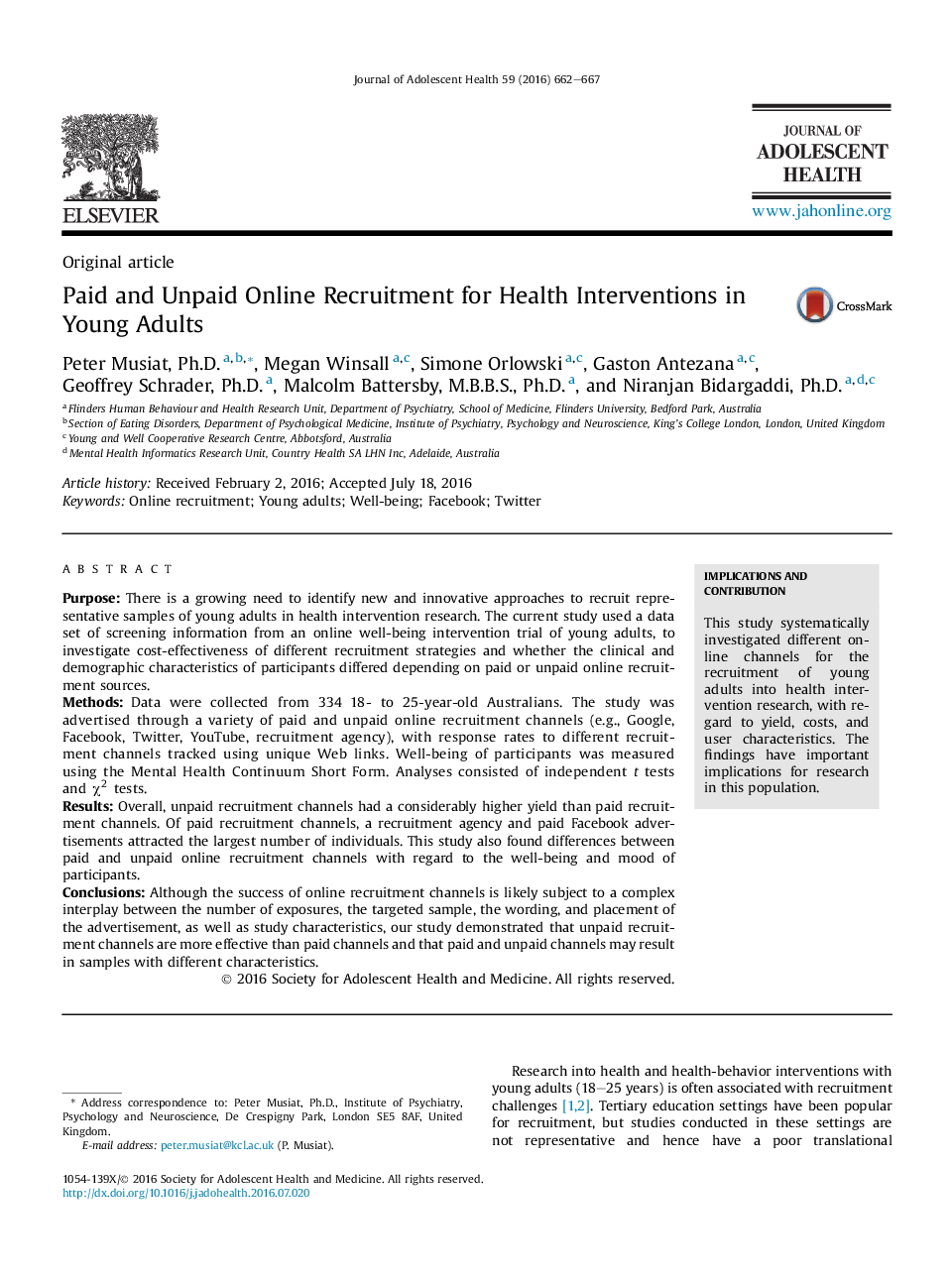| Article ID | Journal | Published Year | Pages | File Type |
|---|---|---|---|---|
| 5121578 | Journal of Adolescent Health | 2016 | 6 Pages |
PurposeThere is a growing need to identify new and innovative approaches to recruit representative samples of young adults in health intervention research. The current study used a data set of screening information from an online well-being intervention trial of young adults, to investigate cost-effectiveness of different recruitment strategies and whether the clinical and demographic characteristics of participants differed depending on paid or unpaid online recruitment sources.MethodsData were collected from 334 18- to 25-year-old Australians. The study was advertised through a variety of paid and unpaid online recruitment channels (e.g., Google, Facebook, Twitter, YouTube, recruitment agency), with response rates to different recruitment channels tracked using unique Web links. Well-being of participants was measured using the Mental Health Continuum Short Form. Analyses consisted of independent t tests and Ï2 tests.ResultsOverall, unpaid recruitment channels had a considerably higher yield than paid recruitment channels. Of paid recruitment channels, a recruitment agency and paid Facebook advertisements attracted the largest number of individuals. This study also found differences between paid and unpaid online recruitment channels with regard to the well-being and mood of participants.ConclusionsAlthough the success of online recruitment channels is likely subject to a complex interplay between the number of exposures, the targeted sample, the wording, and placement of the advertisement, as well as study characteristics, our study demonstrated that unpaid recruitment channels are more effective than paid channels and that paid and unpaid channels may result in samples with different characteristics.
